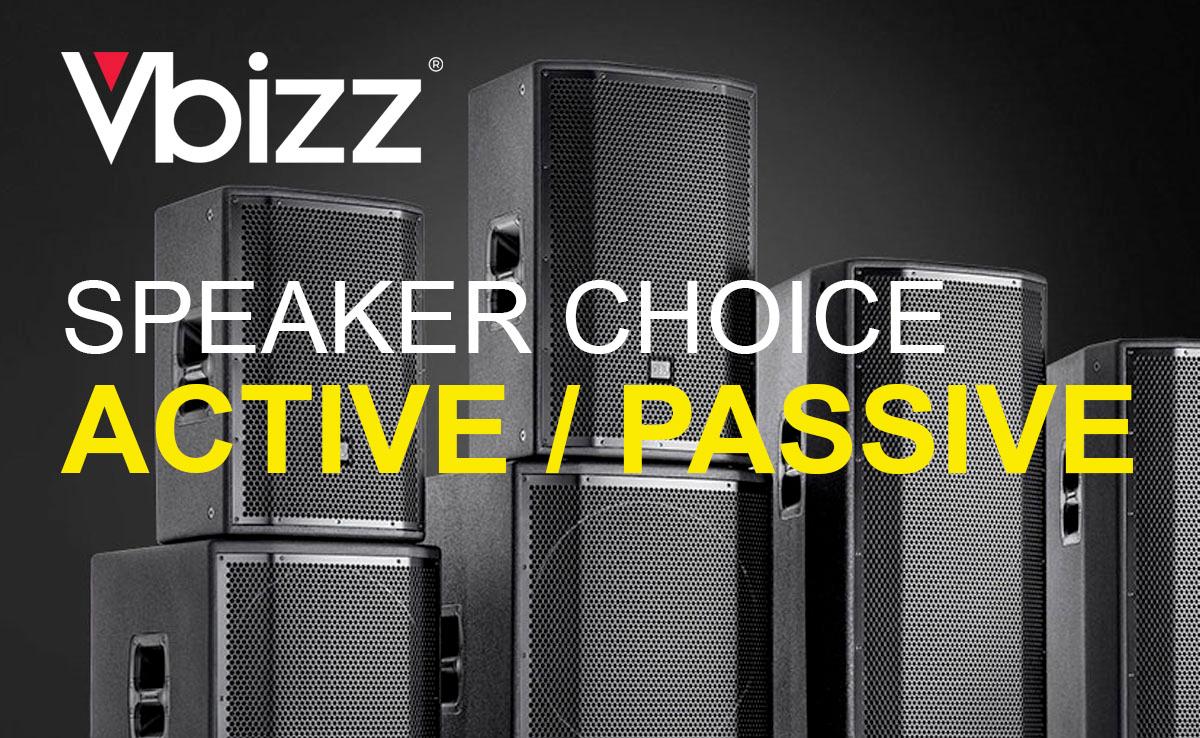Active or Passive? The Speaker of Choice

When you are shopping for speakers, you would often see some keywords like active and passive. There are two main speaker types, active speaker, and passive speaker. Is there any difference between these two speaker types? Well yes. In terms of physical appearance, both speaker types are almost identical, except that active speakers have a power cable attaching to it while passive speakers do not. Now let’s find out the differences together.
Active speaker vs passive speaker
One of the main differences between active and passive speakers are that active speakers have built-in amplifiers while passive speaker does not have a built-in amplifier inside of it, so it needs an external amplifier to connect to.
Because of the built-in amplifier, active speakers tend to be heavier, and a higher price compared to passive speakers. Active speakers will also require main power to operate while passive speakers do not (although amplifiers that connect to them requires main power).
Now then, let’s look into the more detailed differences.

Pros & Cons
After looking at the differences, let’s discuss their pros and cons for each of the speaker types.
Pros & Cons of Active Speakers

Pros
Consolidated design
Active speakers are typically built as single "all-in-one" devices. All an end user needs to do to get started is plug in their line level signal.
Default amplifier matching
Drivers, crossovers, and amplifiers are all components of active speakers. Therefore, even if the maker of the active speaker does not make the amplifier(s) itself, the speaker is at least built with the amplifier(s) in mind. This typically indicates that, by default, the amps are matched to the speaker drivers.
Adjustable volume and effects
Active speakers frequently have EQ settings, allowing the user to alter the audio character. The active crossover networks present in active speakers play a significant role in making this possible.
Cons
Hard to repair
An active speaker must be disassembled to repair any individual component. This could mean sending your speaker away for a long period of time unless you're able to do the repair swiftly and economically.
Lack freedom of placement An active speaker requires external main power to work, which means that it must be placed at a spot that has a socket. Therefore, there are some restrictions on your speaker placement.
Pros & Cons of Passive Speakers

Pros
Easy to upgrade Passive speakers and standalone amplifiers make system upgrades simple and easy. Without having to replace the entire system, we can upgrade the speakers, amplifiers, connections, etc. You may, for instance, improve your stereo amplifier while using the same passive speakers. Another example would be upgrading the speakers to better complement a particular amplifier We are unable to enjoy this luxury with active speakers due to their built-in amplifiers.
Easy maintenance The audio system's distinct components make maintenance a little bit simpler. For instance, if a speaker blows, we only need to replace the speaker and not the amplifier.
Simple to control In bigger venues, passive speakers are simpler to manage from the mixing desk. You don't have to go over to each speaker and turn them on separately or change their volume there.
Cons
Manual amplifier matching
Passive speakers and their amplifiers need to be appropriately matched. In terms of power rating and impedance, there must be a suitable match. In addition to ensuring top performance, this prevents the speakers from being overwhelmed and perhaps being damaged or blown out.
Requires many gears and cables Passive speakers had to pair with a lot of devices and cables to function as a proper system.
Powered speakers and active speakers
Q: When I shop for speakers, I would often see powered speakers rather than active speakers. Is powered speakers a new speaker type?
A: Powered speakers are not new speaker types; they are just alternative names for active speakers.
Active and Passive – Which should I choose?
We have reached to the end of this topic. The last topic I wanted to discuss is how will you choose between these two speaker types.
Active speakers are suitable for easy carrying as you only need to carry the speaker. It could be placed anywhere as long as there is power source. Additionally, thanks to its features you won’t need any extra equipment to work with your speaker as buying those costs you some fortune, and quite some space.
Passive speakers are very suitable for cases where the speakers rarely move around or permanent placement. You can hide the speaker cables behind or beside objects such as walls to conceal the complicated cables. Buying a passive speaker allows you to have the ability to customize your setup, you can mix and match your equipment with your desired brands.
